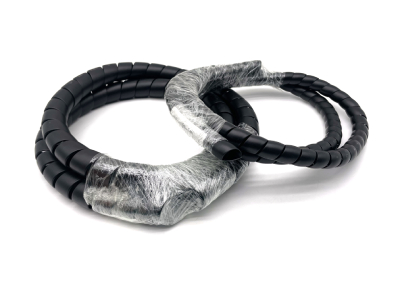Guide to Installing Power Steering Hose Effectively and Safely
How to Install a Power Steering Hose
Power steering is a vital component in ensuring the smooth operation of your vehicle's steering system. Over time, the power steering hose can wear out or become damaged, leading to leaks and reduced steering performance. Installing a new power steering hose is a task that many DIY enthusiasts can tackle with the right tools and guidance. In this article, we will walk you through the steps to install a power steering hose.
Tools and Materials Needed
Before beginning the installation process, gather the following tools and materials
- New power steering hose - Wrenches or ratchet set - Screwdrivers - Hose clamps (if necessary) - Fluid catch basin - Funnel - Power steering fluid - Clean rag or paper towels - Safety goggles and gloves
Step 1 Preparation and Safety
Safety First Before you start working on your vehicle, make sure it's parked on a level surface, and the ignition is turned off. Engage the parking brake and ensure the engine is cool to avoid burns. Wear safety goggles and gloves to protect yourself from fluid spills and debris.
Locate the Hose Open the hood of your vehicle and locate the power steering system. The power steering hose typically runs from the power steering pump to the steering gear. There are usually two hoses—one for high pressure and one for low pressure. Make sure you've identified the correct one needing replacement.
Step 2 Remove the Old Power Steering Hose
1. Drain the Power Steering Fluid Place a fluid catch basin under the power steering components. Loosen the hose clamps or fittings with a wrench or ratchet to drain the existing fluid into the basin. Be careful not to spill any fluid on the engine or other surfaces.
2. Disconnect the Hose After draining the fluid, carefully disconnect the old hose from both the power steering pump and the steering gear. Depending on your vehicle, you may need to remove a few bolts or screws. Store these fasteners in a safe place for later use.
3. Inspect Other Components Once the old hose is removed, inspect other related components, such as the power steering pump, steering gear, and any nearby hoses for wear or damage. Address any issues before proceeding.
how to install power steering hose

Step 3 Install the New Power Steering Hose
1. Position the New Hose Take the new power steering hose and position it in the same routing as the old hose. Ensure that it fits well and is not pinched against any other components.
2. Connect the Hose Attach one end of the new hose to the power steering pump and the other to the steering gear. Use the original fasteners or hose clamps to secure each end tightly. Make sure they’re aligned properly to avoid leaks.
3. Check for Proper Routing Ensure that the new hose is routed correctly and does not obstruct any moving parts. Avoid sharp bends, which could cause premature wear on the hose.
Step 4 Refill the Power Steering Fluid
1. Refill the System Use a funnel to refill the power steering system with the recommended type of power steering fluid. Refer to your vehicle's owner manual for the correct specifications.
2. Bleed the System After filling, start the engine and turn the steering wheel from lock to lock several times. This action will help to bleed any air out of the system. Keep an eye on the fluid level, adding more if necessary.
3. Check for Leaks With the engine running, inspect the connections at both ends of the new power steering hose for any signs of leakage. If you observe any leaks, turn off the engine and recheck your connections.
Step 5 Final Steps
Once you have confirmed that there are no leaks and the steering operates smoothly, clean up any spilled fluid and dispose of it properly. Check the fluid level once more and ensure it's at the appropriate level before closing the hood and taking your vehicle for a test drive.
Conclusion
Installing a power steering hose is a straightforward process that can save you time and money. By following these steps carefully and paying attention to detail, you can ensure that your power steering system operates efficiently and effectively. Always consult your vehicle’s manual for specific guidelines and specifications, and don’t hesitate to seek professional help if you feel uncertain at any point. Enjoy the improved steering response as you hit the road again!
-
Ultimate Spiral Protection for Hoses & CablesNewsJun.26,2025
-
The Ultimate Quick-Connect Solutions for Every NeedNewsJun.26,2025
-
SAE J1401 Brake Hose: Reliable Choice for Safe BrakingNewsJun.26,2025
-
Reliable J2064 A/C Hoses for Real-World Cooling NeedsNewsJun.26,2025
-
Heavy-Duty Sewer Jetting Hoses Built to LastNewsJun.26,2025
-
Fix Power Steering Tube Leaks Fast – Durable & Affordable SolutionNewsJun.26,2025

